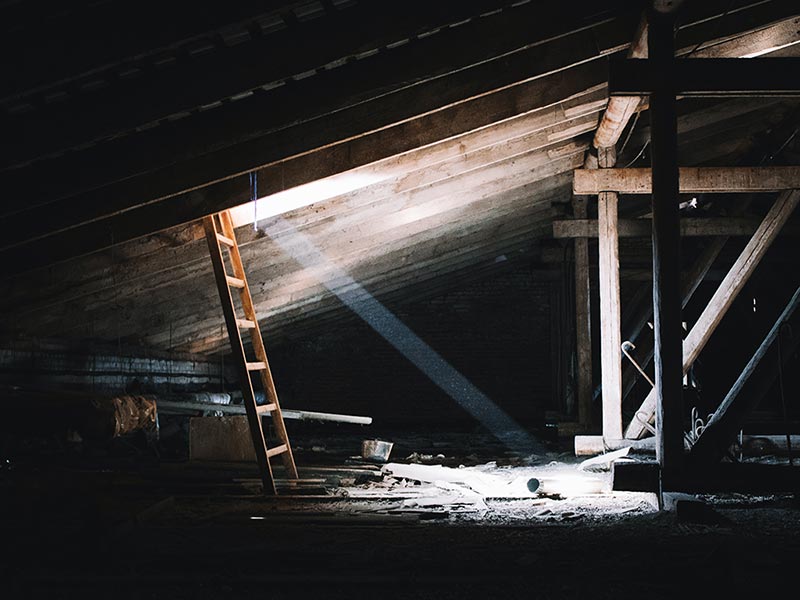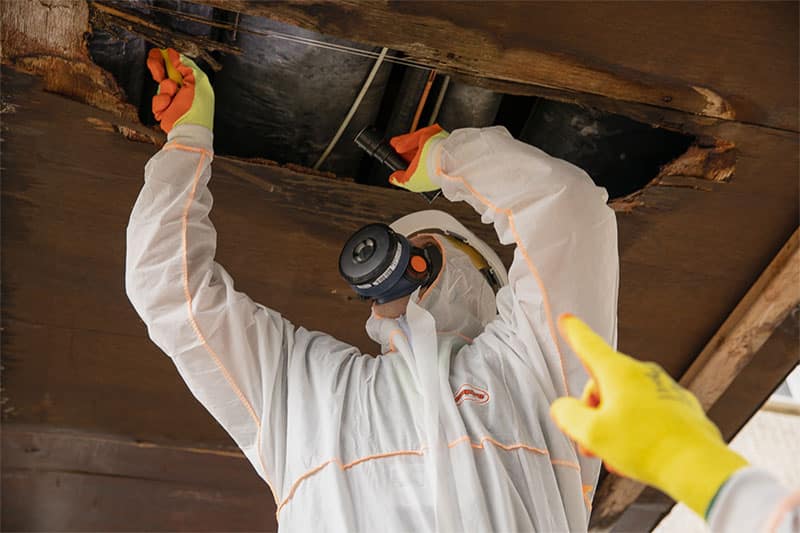What Safety Precautions Should I Take Regarding Asbestos During a Loft Conversion
It shouldn’t be a big surprise that loft conversions have seen burgeoning popularity in the UK in recent years. At a time when the supply of housing seems to be under greater pressure than ever, many homeowners up and down the country who would like to boost the amount of usable space available to them, have understandably decided to “improve rather than move”.
A well-executed loft conversion doesn’t merely give a homeowner more space to enjoy; it can also help drive up the value of their home, which can be handy if they wish to sell the property later.
If, however, a given property owner is looking to have their loft converted, they might have to be especially alert to the potential hidden danger that is asbestos. This should be a particular consideration for those whose houses were constructed or refurbished prior to the year 2000.
This is because asbestos was in legal use in the UK construction industry, right up until 1999. Since then, all forms of asbestos have been banned nationwide, to help protect people from the recognised serious health risks that can arise when someone breathes in the material.

What is asbestos, and why is it a concern during loft conversions?
Asbestos is a naturally occurring fibrous silicate mineral that was first commercially mined in the mid-19th century, and which went on to be extensively used in industries such as shipbuilding and construction.
Prized for its relatively easy availability, affordability, fire resistance, physical strength, and effectiveness as an insulator, asbestos was heavily used in the construction of domestic, commercial, and public buildings alike, from around the 1950s until the 1980s.
Although all forms of asbestos were banned in the UK in 1999, there has never been an automatic requirement for asbestos to be removed from any and all UK buildings in which it is still present. So, in the lofts of residential buildings that were constructed before the year 2000, the lethal fibres are still likely to be present in such areas as loft insulation, textured ceilings, pipe lagging, and water tanks.
This situation, in turn, could mean that in the event of an untrained person venturing into the loft space and engaging in disruptive activities, these asbestos-containing materials (ACMs) could be disturbed. That, in turn, could result in asbestos fibres being released into the air, and subsequently inhaled or ingested by someone nearby.
In the event that such ingestion or inhalation does take place, this could leave the exposed individual at an elevated risk of developing a related, and potentially fatal, health condition, such as mesothelioma or asbestos-related lung cancer.
So, if you have any intention of carrying out loft conversion work in a property – particularly when the property in question dates from before the year 2000 – it is essential to understand, and put in place, safety precautions to will help protect human health.
Conduct a professional asbestos survey
So, what asbestos-related safety precautions should you be taking in readiness for a loft conversion in a building for which you are responsible? Well, one crucial step to take, is the hiring of a licensed asbestos surveyor before starting any loft conversion work.
The term “asbestos survey” refers to the process by which the asbestos situation in a specific property is ascertained. If the building in question was constructed after the 1999 ban on asbestos, it is extremely unlikely that any asbestos will be present in any part of the building, including the loft.
For buildings dating from before the year 2000, however, asbestos is much likelier to be present. In that case, a licensed asbestos surveyor will be able to determine where asbestos might be present in the property, including in the loft – as well as the types and quantities of such ACMs, and the risks they are likely to pose.
You can also expect your chosen asbestos surveyor to produce a survey report, which will detail the asbestos situation in your property, in addition to setting out a recommended course of action for managing the ACMs.
It will be crucial that you understand this survey report and the implications for your loft conversion project. So, if you have any questions or concerns about the survey results, you should not hesitate to ask your surveyor.
Asbestos removal or encapsulation
As we touched on earlier in this article, there is no provision in current UK law that sets out any requirement to remove asbestos in any and all situations in which it might be present. Indeed, even the UK Health and Safety Executive (HSE)’s present policy is that, provided that given ACMs are in good condition and are not disturbed or damaged, they pose “negligible” risk to human health.
But of course, it is also perfectly possible that asbestos found in your building’s loft space presents a higher risk than this. After all, many loft-based ACMs are now quite old, and might have therefore deteriorated or even been disturbed by humans in the past. Certain ACMs in the loft space might also be located in areas where there is a high risk of accidental disturbance during the actual conversion work.
So, with the help of a suitably qualified asbestos professional, you will need to make decisions on how you will deal with any existing ACMs in your loft. You may decide to remove certain higher-risk ACMs altogether from the loft, or you might have other ACMs “encapsulated”.
The term “asbestos encapsulation” refers to a process whereby a protective layer is applied to given asbestos materials. This effectively seals off the materials, and prevents them from being disturbed or damaged in the future.
Remember that any asbestos materials that are disturbed or damaged in your loft in the future could easily release dangerous asbestos fibres. So, encapsulation could be well worth considering as a way of managing asbestos in situ.
Educating contractors and workers
Before contractors and workers begin carrying out loft conversion work, it is essential that they are suitably trained and educated on the potential asbestos risks, and how to deal with these risks.
The subject of what nature and level of asbestos training will be needed for a given site can be a confusing and overwhelming one for the uninitiated. So, it may be useful to consult our comprehensive guide to asbestos training here at Oracle Solutions.
As a broad rule, though, the following principles apply when a worker or contractor will be carrying out loft conversion work: at the very least, they will require asbestos awareness training, which will give them the information they will need in order to avoid disturbing asbestos. If a given worker is intending to undertake work that they know will disturb asbestos, a higher level of information, instruction, and training will be required.
Contractors and workers will also need to be aware of the importance of always adhering to safety guidelines and best practices. Such best practices will include the implementation of proper safety measures and the use of protective equipment during their work.
Precautions to take during demolition and construction
The demolition and construction processes involved during a loft conversion present considerable scope for disturbance to be caused to loft-based ACMs. So, it is crucial that every possible measure is followed to help minimise the potential for such disturbance.
Not only will responsible steps need to be taken to control dust and debris during demolition and construction, but any waste materials – including those containing asbestos – will need to be safely handled and disposed of as well.
The HSE sets out various measures that can be taken to guard against asbestos risks. These include workers cleaning up over the course of their work to prevent waste from accumulating, as well as the double bagging of waste, and its disposal at a licensed tip.
Naturally, there are also certain things during demolition and construction work that contractors and workers shouldn’t do. For example, the HSE urges against the use of any methods that generate a lot of dust, such as the use of power tools. Workers should also avoid sweeping up dust or debris; instead, the use of wet rags or a Type H vacuum cleaner is recommended. Nor should they ever be eating, drinking, and/or smoking in the area where loft conversion work is taking place.
Regular monitoring and air testing
Barely visible to the naked eye, asbestos fibres can easily be present in the air at a contaminated site. This makes it crucial to arrange for regular air monitoring in the loft space. It will help ensure work conditions are still safe and a release of asbestos fibres has not occurred that on-site workers were not even aware of having happened.
Asbestos air testing and monitoring is very much what it sounds like; it entails samples being taken of the air, with these samples then being analysed for any traces of asbestos fibres that could be breathed in by anyone working in the loft space.
Regular inspections and monitoring will play a central role in ensuring the highest levels of ongoing safety at every stage of the loft conversion process.
Communicating with residents and neighbours
Clear and consistent communication with those living nearby where the loft conversion is taking place, will help ensure they are aware of the project, and informed and reassured that appropriate asbestos safety measures are in place.
This process will also enable you to address concerns and answer any questions that residents and neighbours may have about the loft conversion work, so that there is minimal scope for misunderstanding.
Final inspections for reassurance and compliance
Once the loft conversion is done, a final asbestos inspection will verify that any asbestos in the given space has been safely removed or encapsulated.
You will be aiming at this stage to ensure there are no lingering traces of asbestos in the transformed loft space – and therefore, no scope for anyone using the converted loft to disturb ACMs and cause the release of dangerous fibres.
Various regulations apply in the UK to work with ACMs, and this final inspection process will help ensure compliance. It will also, of course, ensure the occupants can enjoy a genuinely safe and asbestos-free loft space.
Are you doing everything possible to ensure a safe loft conversion at your property?
Over the course of this article, we have sought to emphasise how crucial it is to follow proper safety precautions for asbestos during loft conversions.
If you are responsible for a property where loft conversion work is to be carried out, you will need to ensure you hire suitably qualified and licensed professionals, as well as that relevant regulations are complied with at every stage.
Adopt the above precautions when you are next overseeing a loft conversion, and you can help ensure the highest possible standards of health and safety from the start to the end of the project.
To learn more about how our own services at Oracle Solutions could contribute to this, and to request a free and fast quote, please don’t hesitate to contact us.

Written by Mark Carter
Mark Carter is a renowned expert in asbestos management, offering clients vital guidance on compliance and safety. His expertise is invaluable for navigating asbestos regulations, ensuring both safety and legal adherence. Mark's role is central in providing effective asbestos-related solutions, helping clients achieve their business objectives with an emphasis on regulatory compliance and safety in asbestos management.

